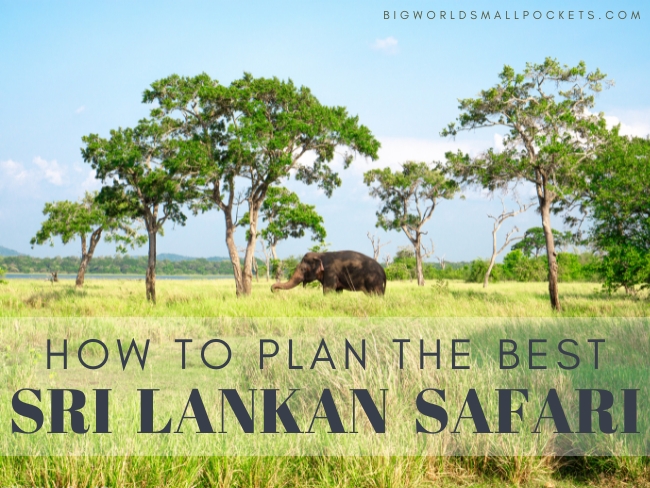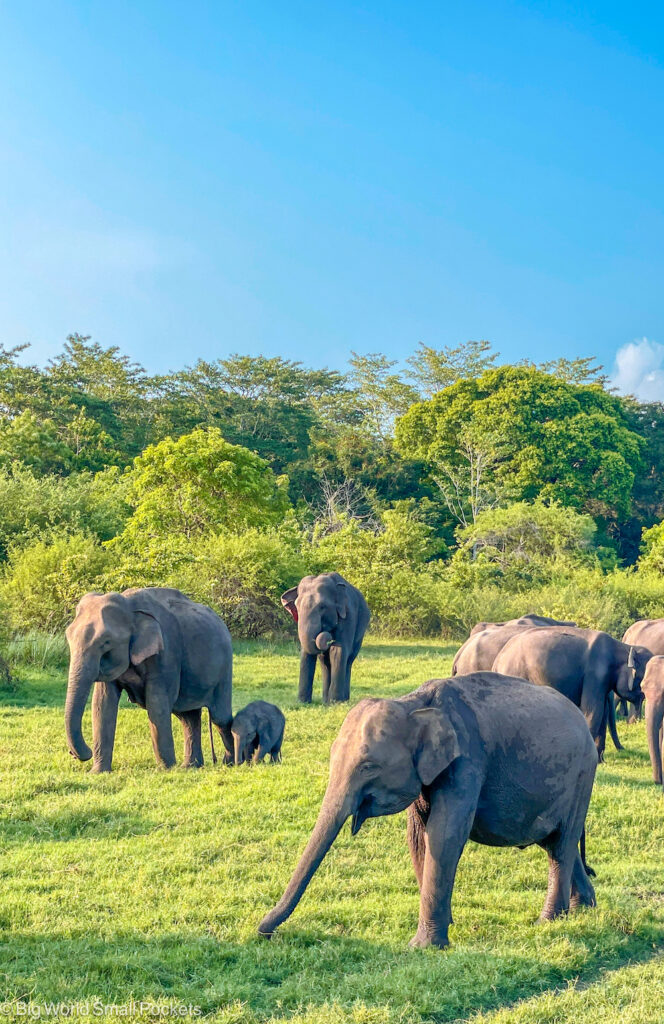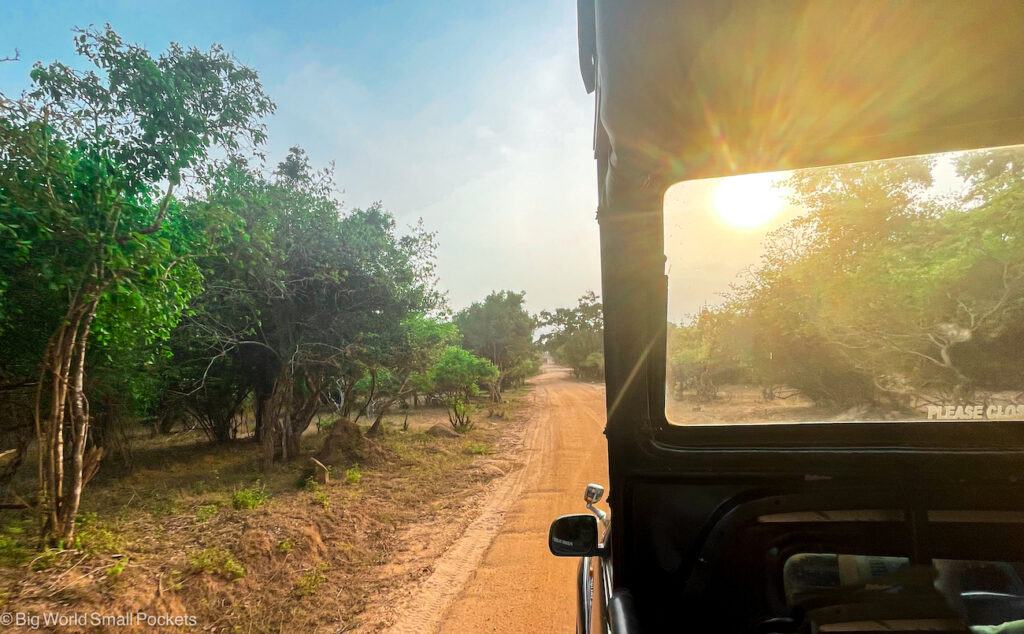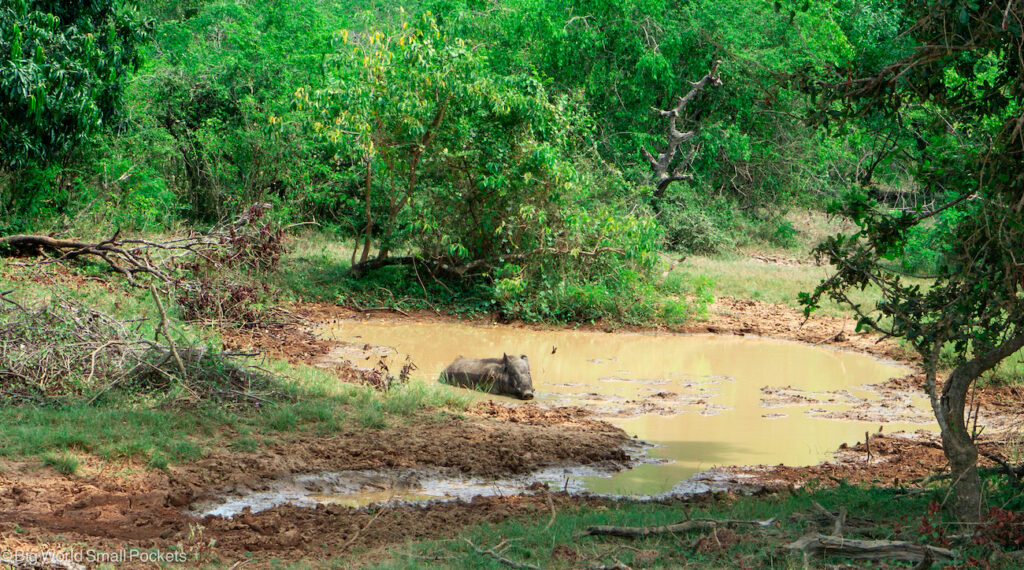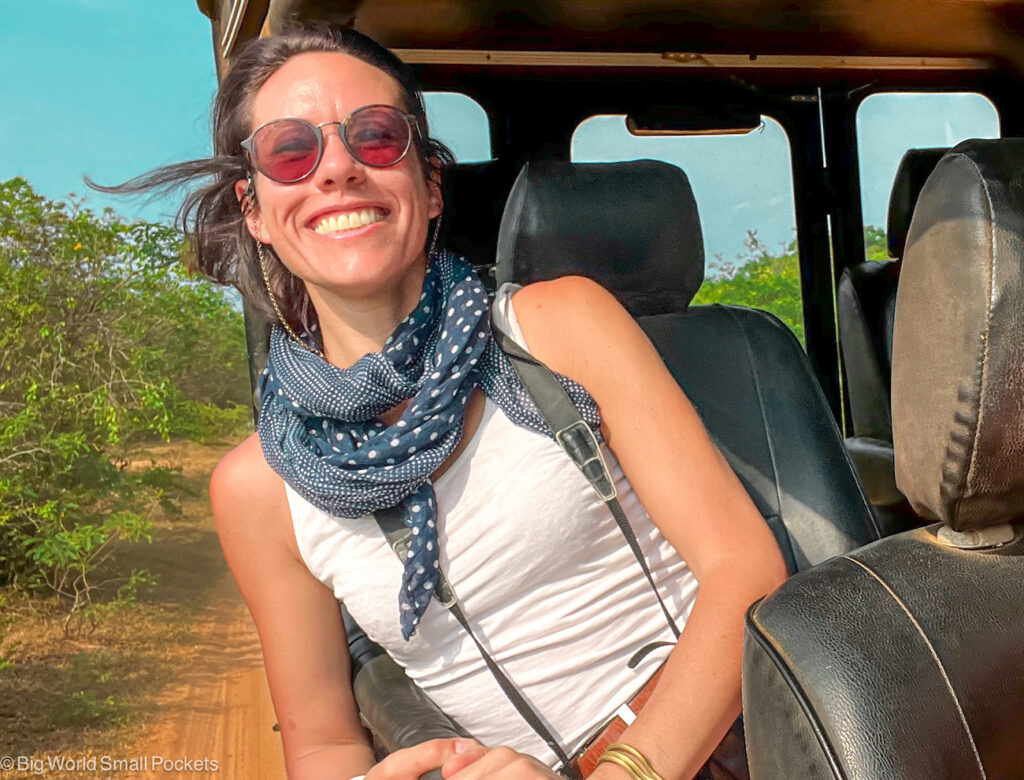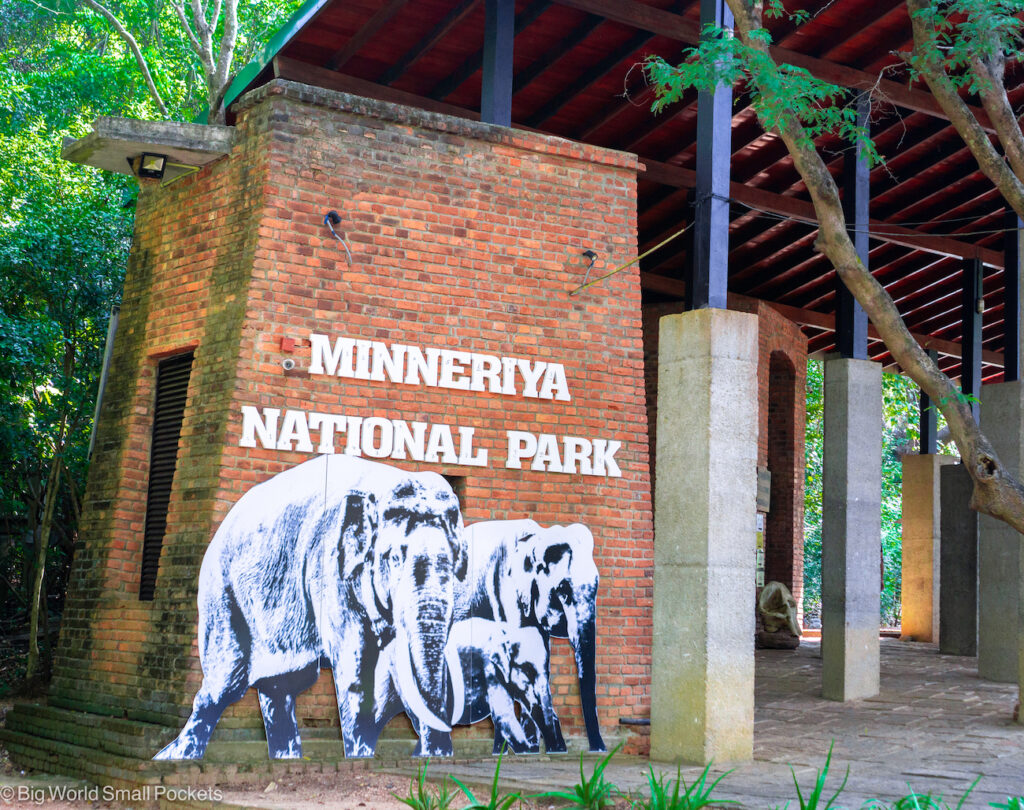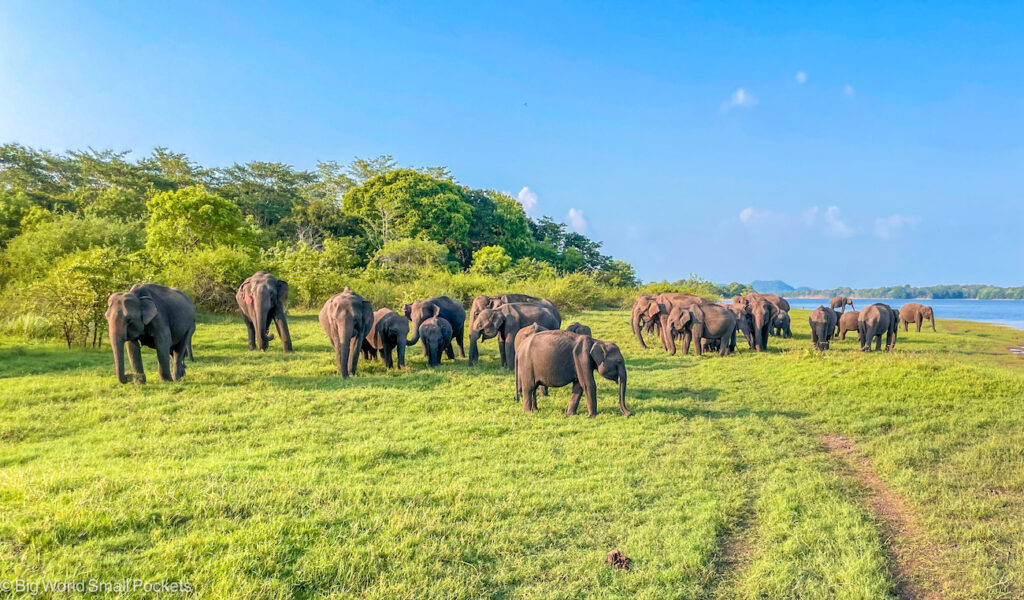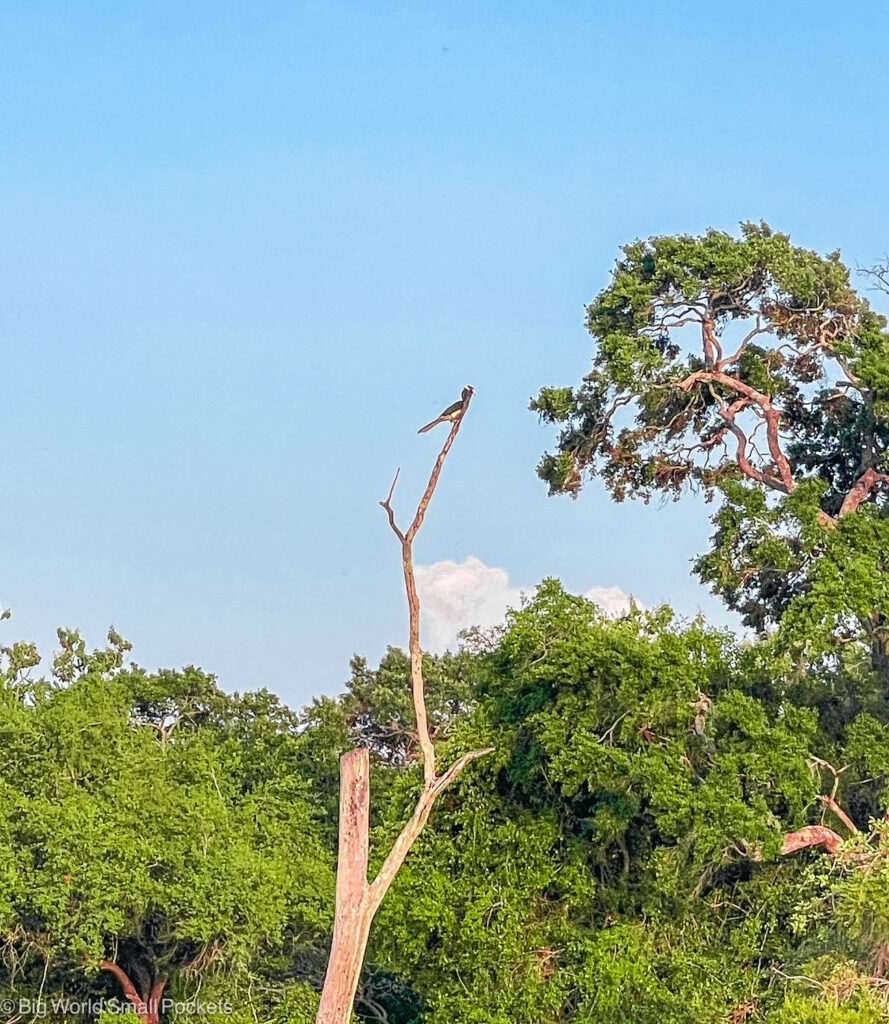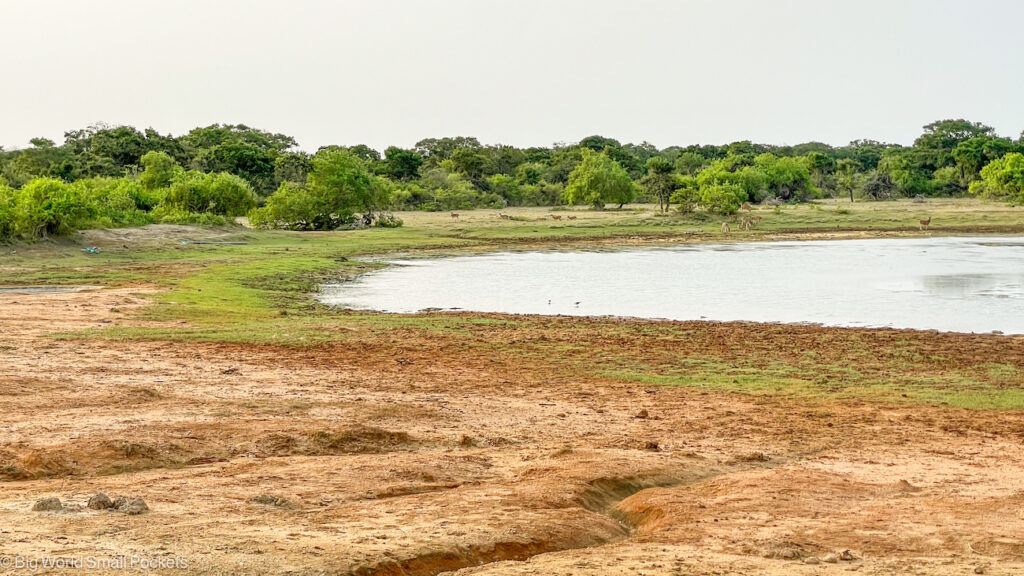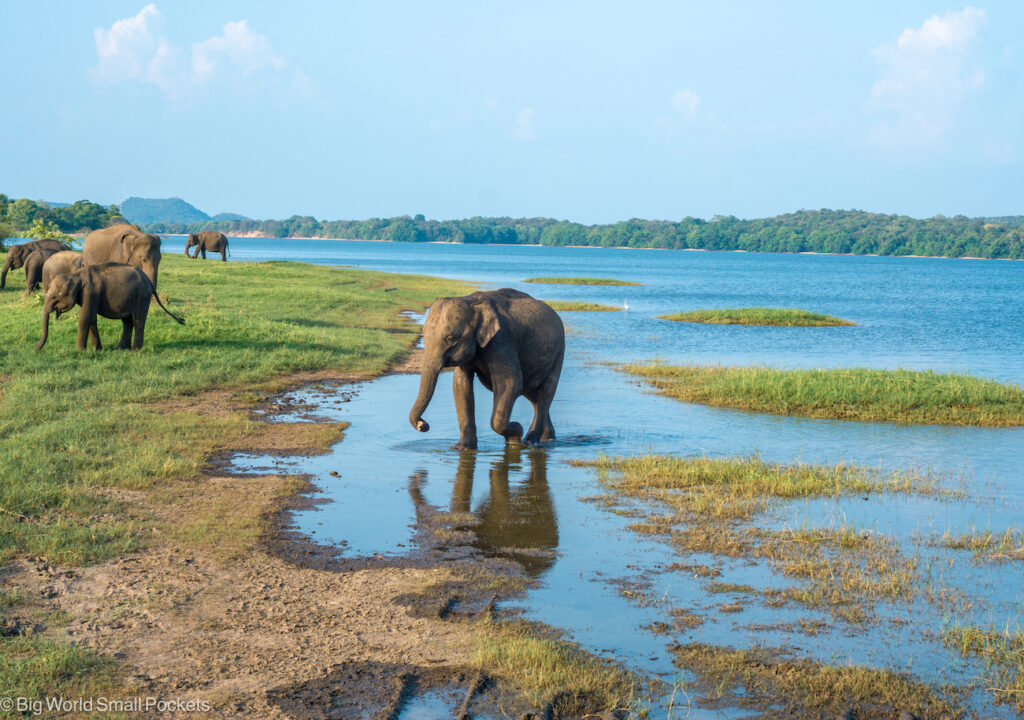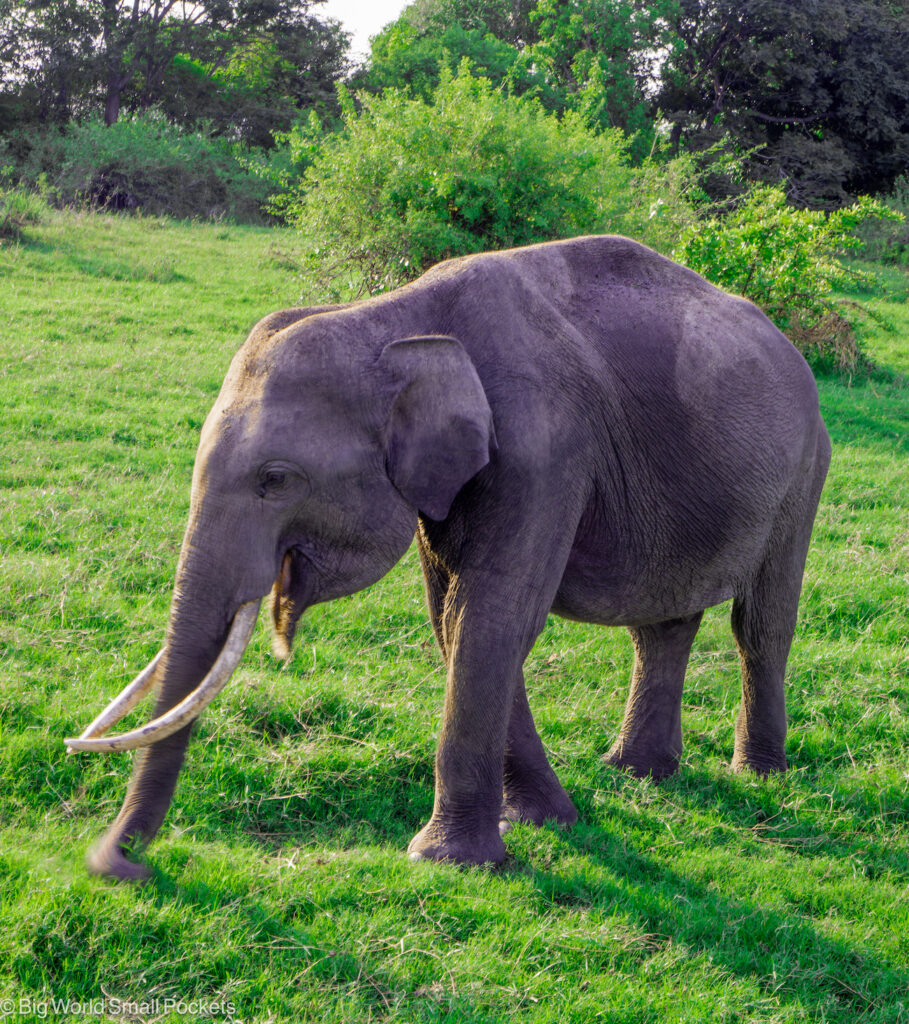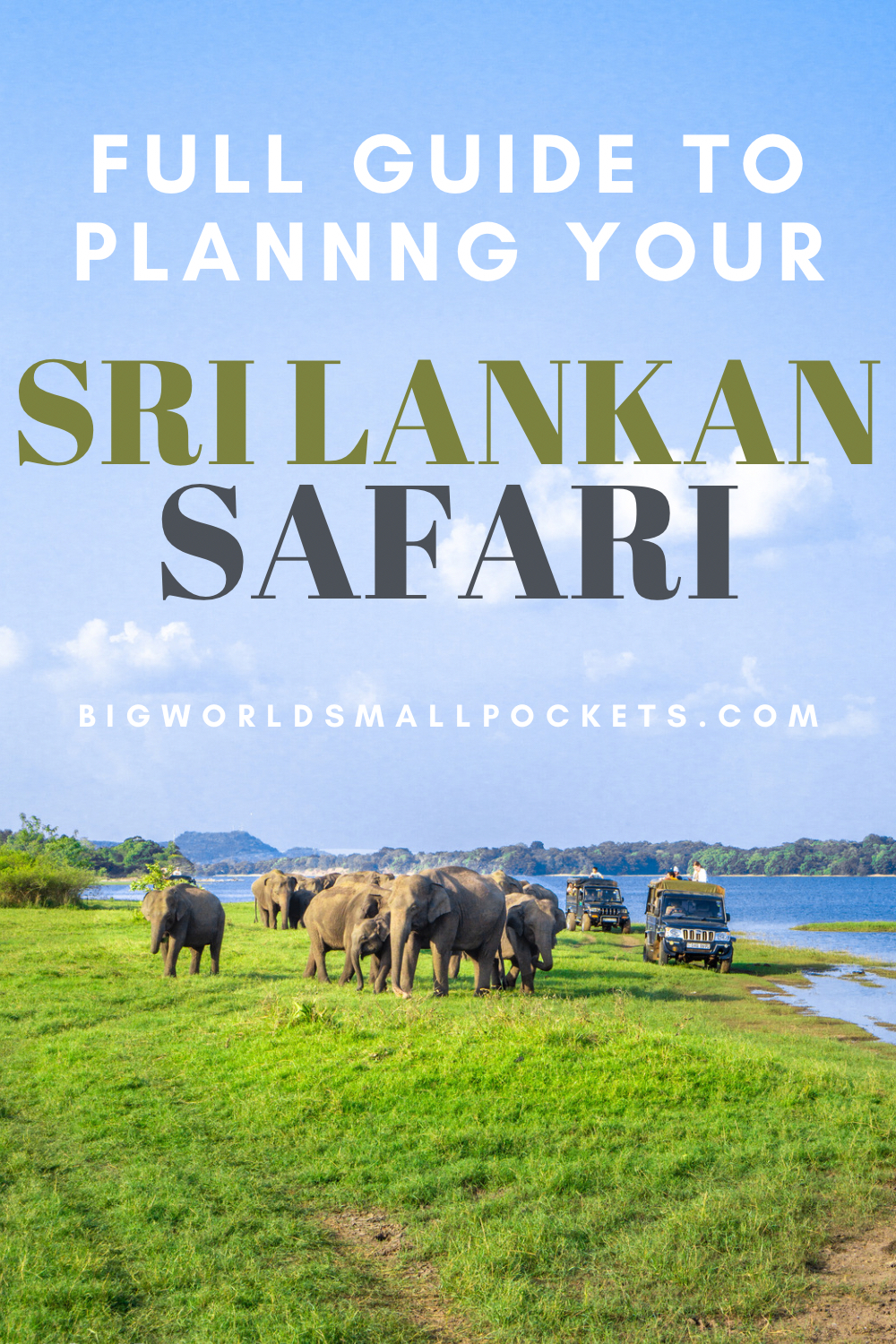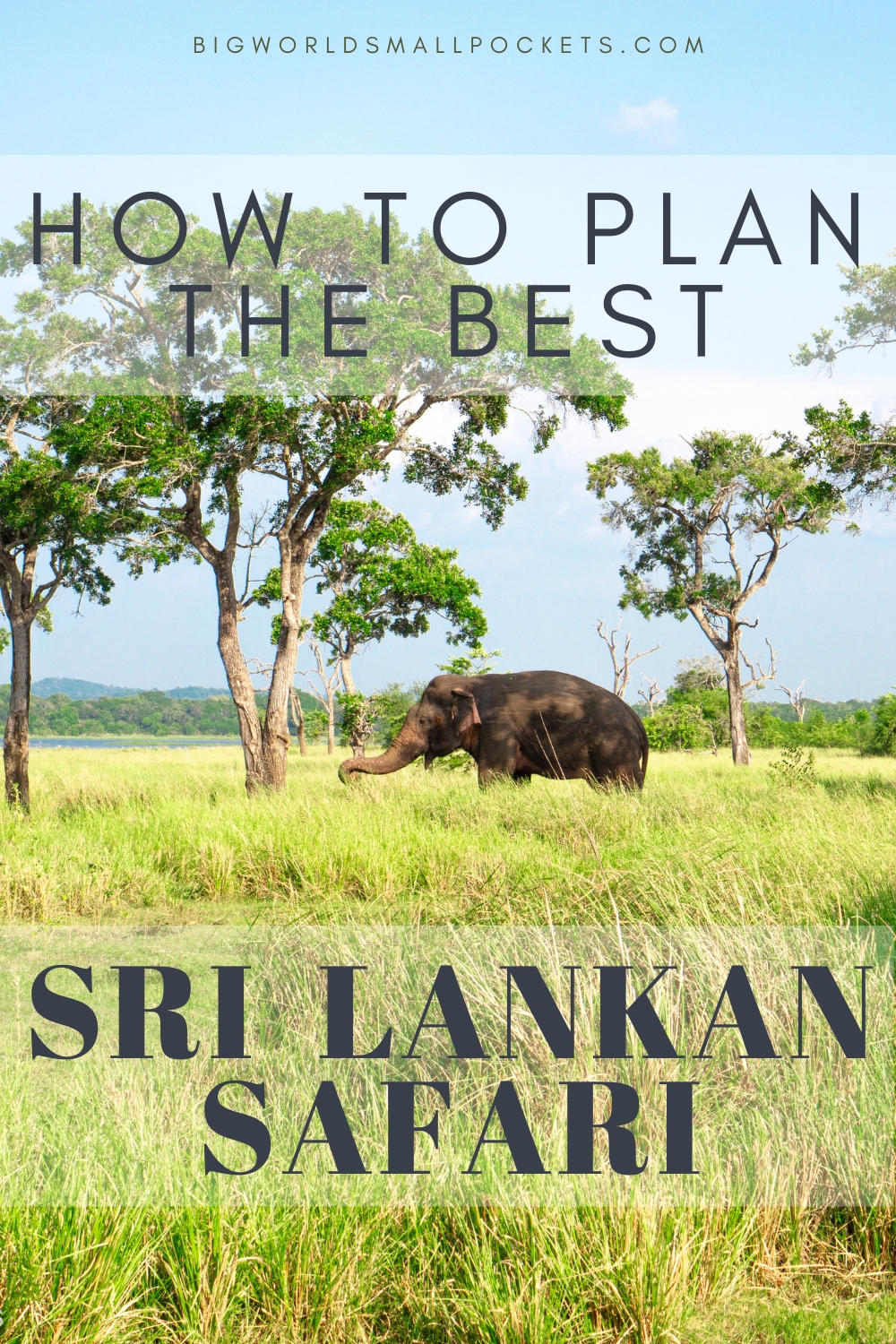We all tend to think about east or southern Africa when it comes to wildlife spotting via game drives, but did you know Sri Lanka also offers some amazing safari opportunities?
Rather embarrassingly, I actually didn’t realise this until I visited this beautiful Indian Ocean island, but was amazed to discover that Sri Lankan safaris abound across many of the island’s 27 national parks.
For an island of this size, 27 protected natural areas is a pretty impressive feat, but an absolute victory for the beautiful landscapes and diverse wildlife found here!
And if you travel to Sri Lanka, you should definitely grab the chance see and experience at least some of them.
So from the best destinations for your Sri Lanka safari, how to organise a safari trip, how much it costs, when to go and what to wear, this is the full guide to planning your perfect Sri Lankan safari…
Related Posts
- 21 Best Things to Do in Sri Lanka
- Ultimate Travel Guide to Galle, Sri Lanka
- 15 Things to Know Before You Travel to Sri Lanka
My trip to Sri Lanka was sponsored by Sri Lanka Tourism but, as always, all views are my own.
This page contains affiliate links meaning Big World Small Pockets may receive a small commission on any purchases at no extra cost to you.
Why Enjoy a Sri Lanka Safari?
If I didn’t spell it out in the introduction, then let me say now that any safaris you enjoy in Sri Lanka are likely to be one of the highlights of your trip here!
I got to enjoy 2 safari adventures during my magical time on this island and, even though I’ve enjoyed a lot of safaris around the world, seeing incredible animals in the wild never gets old!
From incredible Elephant Gatherings (rated one of the world’s top 6 natural spectacles by National Geographic) through to spotting leopards – one of the world’s most elusive and hot to see mammals – Sri Lanka boasts it all.
Coming to this island and not taking in some of the its top protected natural environments and the majestic creatures therefore would be tragedy, so not matter how short your trip to this island, I highly recommend a Sri Lankan safari.
3 Types of Sri Lankan Safaris
Now that I’ve hopefully convinced you to enjoy a safari in Sri Lanka, it’s probably worth getting into the practical details a bit, including the types of safaris you can enjoy here and to plan and book them.
In essence, there’s 3 types of safari trips you can organise in Sri Lanka…
#1 All in Packages
First you can book a stay in a safari specific lodge, in or very near the national park of your choice, and then opt for a package with them that usually includes your room, food and private game drives.
This is usually the way most of the top end or luxury Sri Lankan safaris are organised and you’ll need to book this option well in advance to guarantee the high end safari experience you’re hoping for.
#2 Separate Accommodation + Game Drives
Alternatively, you can book your accommodation and safari games independently.
If you stay somewhere near a park, but not super close to it, you can usually get a better deal on accommodation and your hotel or guesthouse can usually then arrange a game drive for you.
A mid range option, this type of Sri Lanka safari normally requires some flexibility about when you safari, because your accommodation will be arranging game drives with external companies, so will need to see what availability they have.
In this process, you’ll usually be paired with others on your game drive, which is good for keeping costs down.
This option also usually affords you just one game drive in a park – either early morning or late afternoon – so do keep this in mind.
#3 Independently Arranged Safari Drives
The third choice when it comes to Sri Lanka safari options is to book accommodation independently, as per option #2, but to then use public transport to get to your chosen park’s entrance and from there, pick up a safari and guide at the gate.
For this, you’ll likely need to arrive early and, while there will usually be guides and vehicles waiting for game drives at the park entrance, the chance of you meeting up with other travellers might be more a risk.
Do find other travellers and you can get a great price on a safari game drive due to the independent organisation you’ll do, which avoids the cost of any third parties.
This makes option #3 a great choice for budget travellers, especially those who have a lot of flexibility in their travel schedule.
However if you don’t find other travellers, you risk having to cover the costs of the whole game drive yourself, which can be significant.
What to Expect from a Sri Lankan Safari
Game drives usually take place either in the early morning or the late afternoon, this is because the animals tend to hide away and sleep in the shade during the main heat of the day.
If you opt for a morning game drive, you’ll need to be prepared for an early start.
If you go for an afternoon option, you usually won’t get back to your accommodation until after dark.
Most Sri Lankan safaris take place in open sided, clearance vehicles, which boast open roofs as well.
Therefore bringing clothing (especially hats) and sunscreen that protect you from the sun is key.
Usually taking between 2 and 4 hours, game drives can be bumpy affairs, so sports bras could be useful too!
I’d also advise bringing water with you and, of course, a good camera to snap the amazing wildlife.
And don’t forget that your safari games drives in Sri Lanka will normally be with other people – usually in a group of 6 to 8.
Where to Safari in Sri Lanka?
Out of Sri Lanka’s huge number of national parks, there’s 8 I particularly recommend for safari trips thanks to their accessibility, serenity, plethora of wildlife, accommodation choices and overall experience.
Below you’ll find the lowdown on each of these…
Best Places for a Sri Lanka Safari
#1 Minneriya National Park
Home to the “elephant gathering”, one of the National Geographic’s top natural experiences across the world, seeing this unique spectacle is a must when in Sri Lanka.
And the place to see it, is on a Sri Lankan safari in Minneriya National Park.
Head out for a game drive in the afternoon and you’ll get the chance to see huge herds of elephants gathering late in the day to socialise and splash around at the park’s huge lake.
Elephants gather here most times of the year (I saw them in May), but the biggest numbers are apparently in August – I guess it’s something to do with mating season!
When I visited there were quite a few jeeps gathered around, but all kept their respectful distance and everyone got great views of the elephants, who calmly went about their elephants lives… including a couple of babies too!
Minneriya is also famous for its monkey and butterfly populations.
Situated close to Sigiriya in Sri Lanka’s cultural triangle, Minneriya is a great park to combine with the historic attractions in this area, such as climbing the Lion’s Rock, which makes it an easy and accessible Sri Lankan safari.
Most people just head to Minneriya in the afternoon for the elephant gathering, so it’s best to simply book a half day tour here and stay outside the park and explore the other nearby attractions too.
Learn more about my safari experience in Minneriya National Park here.
Location: Central Sri Lanka, close to the Cultural Triangle attractions such as Sigiriya. A 3.5 hour drive from Colombo.
Wildlife: Elephants and monkeys mostly, plus an impressive 25 butterfly species, 25 reptile species and 150 bird species.
When to Visit: You can visit this park year round, although dry season is from June to September. Visit in August to see the largest numbers of elephants.
Who Should Go: Elephants lovers, as well as those interested in combining safaris with nearby cultural attractions such as Lion’s Rock and Dambulla Golden Cave Temple.
Top Tour: 3 Hour Affordable Private Safari
Where to Stay: Aliya Resort & Spa
#2 Yala National Park
The most well-known and popular Sri Lanka safari destination, Yala National Park is famous for its magnificent leopard population – there’s estimated to be between 40-60 in this park.
As such, spotting one of these illusive creatures is certainly very possible at Yala, hence why it’s a big hitter!
I’d heard complaints that Yala was overcrowded with jeeps and tourists. and that the noise and number of vehicles actually makes your chance of spotting a leopard low in this park, but I don’t know what everyone is talking about, because when I visited it was very peaceful and we saw a leopard!
This is only the 2nd time in my life I’ve seen one of these big cats (the other was in Zambia’s South Luangwe National Park) and given how many safari I’ve experienced (15 maybe?), this gives you some indication of how rare leopard sightings are… and how excited I was to see one!
Of course, sightings are not guaranteed but, given that Yala is meant to have the highest density of leopards in the world, you’re in with a pretty good chance!
The landscape is also quite diverse in Yala National Park, with small lagoons (great for bathing water buffalo), bush lands (fab for spotting warthogs) and grasslands all forming the rich fauna here.
Location: Southeast Sri Lanka. About a 6 hour drive from Colombo.
Wildlife: As well as leopards, Yala also boasts a large elephant population, over 215 species of birds and some Sri Lankan sloth bears, warthogs and saltwater crocodiles too.
When to Visit: February through August – dry season.
Who Should Go: People keen to see leopards, plus families & groups.
Top Tour: Full Day Leopard Safari with Lunch
Where to Stay: Cinnamon Wild Yala Hotel, Yala Safari Camping Hotel, Big Gam Yala by Eco Team
#3 Udawalawe National Park
Yala’s smaller cousin, Udawalawe National Park is located very close to Yala, but boasts far fewer tourists, which means if you’re looking for a spot to enjoy a quiet safari, this could be the one!
Known for its large elephant populations (there’s thought to be between 400 and 500 in this park), Udawalawe is also one of the top birdwatching spots in Sri Lanka.
Lots of open grassland means it’s easy to see animals here and, with far fewer visitors than Yala, safaris here tend to be a bit cheaper too.
For more elephant experiences why not check out the abandoned elephant calf sanctuary that is found in Udawalawe too.
Location: Southeast Sri Lanka, just west of Yala National Park. About a 5 hour drive from Colombo.
Wildlife: 180 species of bird, around 500 elephants, 32 reptile species, plus samba deer and wild boar.
When to Visit: This park is open year round, but February through August is probably the best time for animal spotting thanks to the stripped back vegetation.
Who Should Go: Those looking for a quieter safari experience or who want to get off the beaten track. This is also a good park for those keen to have up close and personal experiences with elephants.
Top Tour: Entry Ticket + Half Day Safari
Where to Stay: Jungle Paradise, Makulu Safari Camping, Kalu’s Hideaway Udawalawe
#4 Wilpattu National Park
The oldest (dating back to 1938) and the largest national park in Sri Lanka, Wilpattu National Park still feels wonderfully wild and untouched despite its legacy.
This is probably due to the fact it was closed during Sri Lanka’s civil war, meaning it’s now one of the most secluded Sri Lankan safaris and perfect for feeling you have the place to yourself.
If you’re looking for peace and quiet and a sense of the untouched, then this is the national park to head for.
Famous for its natural pools, animals can easily be spotted in Wilpattu year round.
Sightings regularly include the Sri Lankan sloth bear and the elusive leopard.
Location: Near Anuradhapura in northern Sri Lanka. 4 hours drive from Colombo.
Wildlife: Sloth bears, leopards, water buffalo, deer, crocodiles, cobras and pythons.
When to Visit: Year round.
Who Should Go: Those looking to spot sloth bears and leopards and enjoy a sense of solitude. Also a good option for older travellers and families due to the excellent infrastructure.
Top Tours: Full Day Safari Tour from Negombo or Full Day Safari Tour from Anuradhapura or Full Day Safari Tour from Colombo
Where to Stay: The Deer Park Hotel, Green Garden Homestay, Lake Cabin
#5 Bundala National Park
Famous for its birdlife, Bundala National Park is renowned for its migratory water birds, who descend on the place between November and March.
197 species have been recorded here, including the Greater Flamingo.
Close to the town of Nuwara Eliya in the central highlands of Sri Lanka, Bundala National Park is one of the lesser visited Sri Lankan safari destinations.
The fewer visitors is likely due to the lack of bigger mammals, such as elephants.
For twitchers however, Bundala is a must visit destination in the south of Sri Lanka and offers very affordable wildlife drives.
Opened as national park in 1993, Bundala’s landscape includes lakes and salt pans and has been recognised as a biosphere reserve by UNESCO.
Location: Southern central Sri Lanka, near Nuwara Eliya. Around 5 hours drive from Colombo.
Wildlife: Birds, birds birds!
When to Visit: November through March to see the migratory species.
Who Should Go: Birdwatchers.
Top Tour: 4×4 Half Day Safari from Hambantota
Where to Stay: Living Heritage Koslanda Hotel, Crystal Resort, The Misty Mountain Guesthouse
#6 Kumana National Park
Located near Arugam Bay – Sri Lanka’s most famous surf spot – Kumama is a great spot for a Sri Lankan safari if you’re basing yourself on the island’s southeast coast.
Formerly known as Yala East National Park, Kumana was officially renamed in 2006 and boasts good populations of elephant, deer, jackal, boar, crocodile, turtle and water buffalo, not to mention birds – the park has recorded a whopping 255 species within its boundaries!
A great budget option, most travellers simply hire a tuk-tuk to head to the park from Arugam Bay and then pick up a half day game drive option from the park entrance.
That said, you can also camp overnight in the park for a really wild experience that remains affordable.
Location: Southeast coast of Sri Lanka, near Arugam Bay.
Wildlife: Mammals such as elephants and jackal, alongside reptiles like crocodiles and turtles, plus a huge number of birds.
When to Visit: It’s best to visit Kumana during the east coast dry season from May to September.
Who Should Go: Backpackers, surfers and independent travellers based in Arugam Bay
Top Tour: Half Day 4X4 Safari
Where to Stay: Whisky Point Resort, Lucky Bay, Forcus Cabanas Guest House
#7 Kaudulla National Park
Very close to Minneriya, Kaudulla is a smaller park, but it still boasts huge elephants numbers.
Less popular, this is a quieter Sri Lanka safari experience with fewer jeeps around.
Location: Central Sri Lanka, close to the Cultural Triangle attractions, such as Dambulla. A 4 hour drive from Colombo.
Wildlife: Elephants mostly! Plus birds, crocodiles and monkeys.
When to Visit: Head here during the east coast’s dry season from May to September.
Who Should Go: Those who want to spot elephants and have an overall quieter experience.
Top Tour: Half Day Jeep Safari
Where to Stay: Aliya Resort & Spa, Habarana Ambasewana Resort, Wild View Stay
#8 Ridiyagama Safari Park
Not a national park, Ridiyagama is, instead, Sri Lanka’s first safari park.
At 500 acres, this is essentially a large animal park, but one where the wildlife still roams free.
Opened in 2016, there’s 22 different types of animal here, which you can see as part of a day trip, as there’s no accommodation in the park.
It’s open 7 days a week 8:30 – 4:30pm and is a great option for families.
If you’re based in south Sri Lanka and want an easy half day safari the lids can enjoy too, this is a top option.
Location: South Sri Lanka. About a 7 hour drive from Colombo. Much less time from Galle!
Wildlife: A whole host of Sri Lankan animals such as elephants, as well as some visiting animals including lions.
When to Visit: December to May.
Who Should Go: Families.
Where to Stay: Vishmee Holiday Inn, Shangri-La Hambantota, Ladja Beach Resort
Just enter your details below and I'll email it you - simple!
Information will be sent to the email provided above
Best Time to Safari in Sri Lanka
The best time to safari in Sri Lanka will depend on which park you want to visit.
I’ve highlighted the best times for each recommend park above, but if you’re looking to explore multiple parks, then overall I’d say December through June are the best times for a Sri Lanka safari.
During these months you’re guaranteed the best wildlife sightings, as there’s the least amount of rainfall across the country in general during these months.
You can learn more about the best times to visit Sri Lanka, including for safaris, cities, sightseeing, surf and cultural events in this article I wrote.
What to Wear on a Sri Lanka Safari?
Loose comfortable clothing in neutral colours is the best option for your Sri Lankan safari experience to keep cool, covered from the sun and to blend in with the surroundings.
A scarf or buff can be useful to drape over shoulders and neck too, as well as over your mouth in dusty area.
Don’t forget a hat to protect yourself from the sun, sunscreen and water, as well as sunglasses and your camera.
It’s usually fine to wear sandals on your feet as you are unlikely to leave the safari vehicle.
For more info about what to pack and wear for your Sri Lanka travels, check out this article I wrote, which includes a full item checklist.
When to Book a Safari in Sri Lanka?
For those travelling on a tight timeframe, I recommend planning and booking your Sri Lankan safari around 4 weeks in advance.
If you’re going for an all in package with accommodation this is easy to do online.
For independent travellers with more flexibility, the best deals are likely to be had last minute, in and around the national parks, providing you can find others to safari with you.
How Many Safaris Should you Experience?
I think 2 safaris in Sri Lanka is a great number if you are here for 7-14 days.
Choose parks that give different experiences such as Minneriya for elephants and Yala or Wilpattu for leopards and sloth bears.
I enjoyed 2 safaris while I was here – 1 in Minneriya National Park and 1 in Yala Minneriya National Park – and thought this was the perfect amount in my 11 day trip.
Any more than 2 safaris and you’re likely to start getting bored, unless you’re a really wildlife or photography fanatic that is!
Are Sri Lankan Safaris Expensive?
Accommodation in Sri Lanka can be incredibly affordable at the lower end – think around $30 USD a night for a room.
This is especially true if you stay outside of national parks in the nearest town.
Game drives cost anything between $30-$60 USD for a half day safari and $70-$100 for a full day.
The price you pay will depend on the park you visit, the number in your group and whether you book your safari direct or through a hotel / tour operator.
Travel Insurance for Sri Lanka
World Nomads offers simple and flexible travel insurance. Buy at home or while travelling and claim online from anywhere in the world.
Alternatively, if you’re a long-term traveller, digital nomad or frequent remote worker seeking travel health cover, check out Safetywing’s Nomad Insurance policies.
Travel Money in Sri Lanka
The easy way to spend abroad with real exchange rates, no markups and no sneaky transaction fees, you can use your Wise card just like a debit card in Sri Lanka… and it links easily with Google and Apple pay. Get yours here.
PIN IT TO PINTEREST!
And there you have it, my full guide to planning the best Sri Lankan safari experience.
From the different types of safari you can enjoy, to the difference animals you can spot and the huge range of destinations you can see them, I hope this guide has you got excited about planning your wildlife spotting adventures in this amazing island.
Have you been on a Sri Lankan safari?
Have any tips to share?
Help fellow travellers out by dropping any advice you have into the comments box below…

